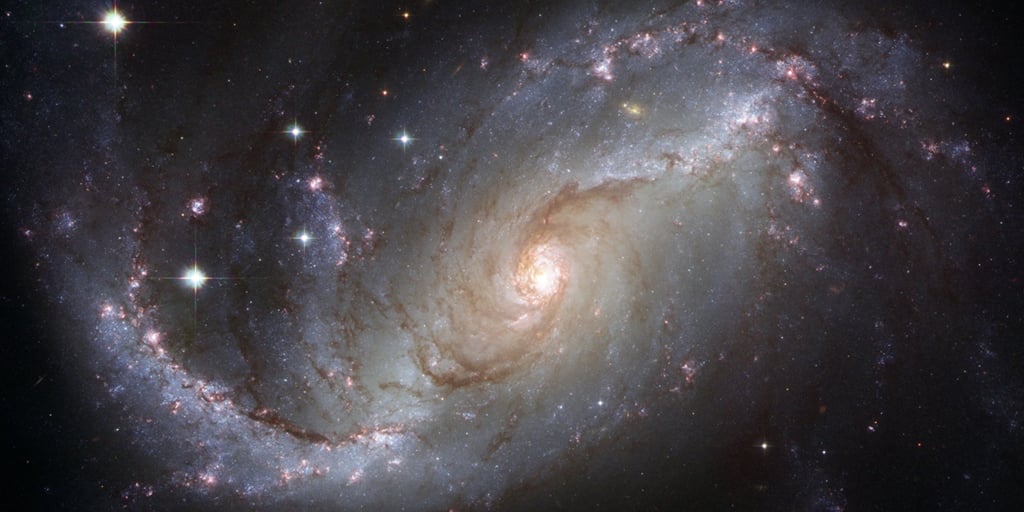
Space: The final frontier. A topic that is touched on in many science classrooms, but rarely finds a foothold in the major learning of our students. Learning about space provides opportunities to not only teach the Next Generation Science Standards (NGSS), but also allows students to think, dream, and wonder.
As a classroom teacher of science or any other discipline, the topic of space can be a great crosscutting concept. As teachers dive into the NGSS, they can use these cross-curricular ideas to engage and deepen student learning.
Why Include Space in Your Curriculum?
Teachers might think this is not in their standards or way out of their comfort zone, so why teach about space? Here are some quick-hitting answers that I think any teacher would be interested in:
- It’s mysterious: There is so much that’s unknown about space and so much being discovered all the time, it’s a great place to find new answers and undiscovered details.
- It’s engaging: The visuals that come from teaching about space stick with us over time. The ships and equipment are so unique and the topic can really hook our learners.
- It creates curiosity: Space is full of experiences that we’ve never had—and probably never will. This creates a wonder in kids that's hard to do in our technology charged society.
- It’s ever-changing: There are new discoveries all the time, which makes it a great tool for constant engagement.
- It’s STEM through and through: Some of the other STEM lessons that I’ve seen have bits and pieces of things like engineering or math, but teaching about space hits all four areas of STEM—and does it every time.
Regardless of a teacher’s grade level or content area, there is something to be found in teaching about space for everyone. If you’re interested in teaching about space in the next few weeks, here are some resources that can help you get started:
- NASA Educator Resources: In my humble opinion, the best resources available are on the NASA site. They span K-12 (even into higher ed), have multiple opportunities for STEM learning, and include both engagement and humor. It’s also aligned with NGSS to help support teachers in that way as well. There is a lot to go through, but it’s rich and full of great learning opportunities.
 Space and Robotics: Boxlight and ShareSpace Education, a key program of the Aldrin Family Foundation, are working together to provide robotics lessons for students to use while navigating giant maps of the moon and Mars.
Space and Robotics: Boxlight and ShareSpace Education, a key program of the Aldrin Family Foundation, are working together to provide robotics lessons for students to use while navigating giant maps of the moon and Mars.
- Scholastic: This resource has lesson plans across all grade levels from K-8. It’s a great combination of literacy and space learning, offering a wide range of articles in a variety of aspects surrounding the topic. This is definitely worth exploring to think about cross-curricular options for non-science teachers.
- Mars Education: The astronaut-led trip to Mars in 2025 hits all of the engagement components mentioned above. This source comes from Arizona State University and has a plethora of lessons for teaching specifically about Mars and the Mars mission.
- NASA Mars Community: This is a completely different take on the Mars mission and has a social studies component to the learning. These lessons are all about forming a community on Mars and what that would entail, and they require students to think about their own communities and all the aspects of what makes a community.
- In-The-Sky.org: Not thinking about navigating space, but just observing it from the ground, this site can help us to teach students about the stars, moon, and Earth. There is a lot of math to learn through lessons like these, including angles, distance, speed, and rotation. This can ignite the curiosity and mystery in our students as it has for generations of humans for centuries before us.
There are, of course, dozens of other great resources to be found in this realm. Space is a great way to teach students about science, technology, engineering, and math, but also to help create wonder and excitement about the universe beyond our world. I highly encourage all teachers to take some time to explore how space can be a great hook for their next classroom lesson.
Looking for ways to incorporate space topics into your curriculum? Download our new and improved Big Guide to STEM Volume 2 today! Inside the guide, we dive into the many ways you can enhance STEM learning for your students, including resources for teaching about space and considerations for bringing robotics into your classroom.




